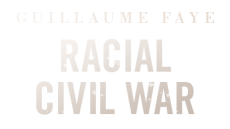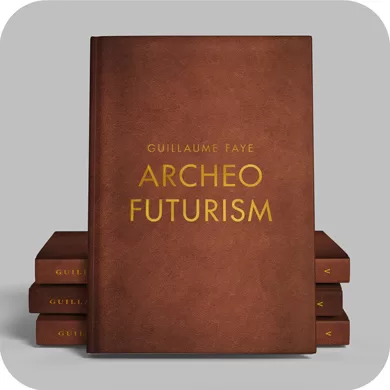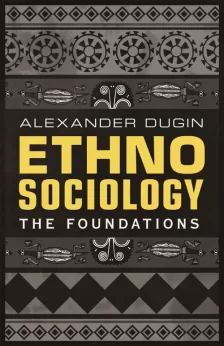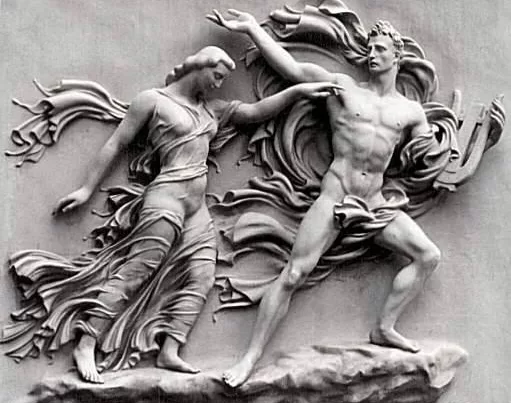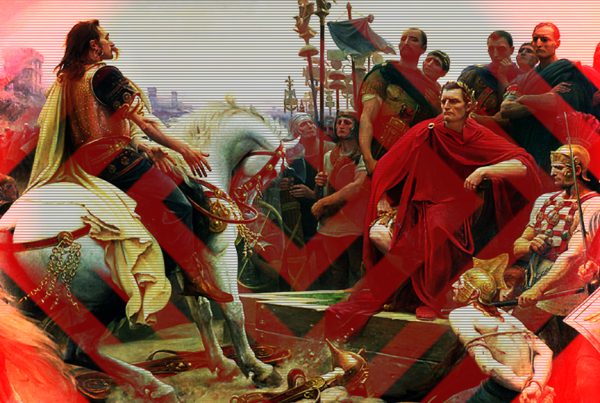“We live in an age in which there is no heroic death,” Yukio Mishima famously proclaimed. This is perhaps his best known line. “Perfect purity is possible if you turn your life into a line of poetry written with a splash of blood,” would likely be his second, which is precisely what he did. Mishima was a man who lived and died by his principles.
We live in an age of ideals, yet precious few who are alive today would be willing to die, or to even risk death, for the ideals they regard with such great esteem. Progressives clamor for diversity, inclusion, and equity, while mainstream conservatives praise the concept of democracy to the heights of the heavens, having turned it into a de facto religion. And yet few on either side would be willing to go to their deaths for these ideals which they so ardently espouse. Their ideals are largely free-formed and directionless, lofty concepts that have been vaguely delineated. They are sketches of ideals, rather than ideals. It is no wonder, then, that no one is willing to die for these nebulous concepts. Mishima very clearly defined his ideals in the philosophical treatises Sun and Steel and The Way of the Samurai, as well as in much of his fiction, most notably his Sea of Fertility tetralogy, completed on the morning of his ritual death.
At least in mainstream society, there is little deeper thought or underlying philosophy behind the ideology of either progressives or conservatives. Progressives cannot say precisely what it is that they are making progress towards, while conservatives cannot describe what it is that they are seeking to conserve. It is, ultimately, empty idealism, propped up by deliberately lofty phrasing. Some of this language is beautiful indeed; freedom, liberty, independence… But I would like to ask them to define these words. I would like to ask them what, precisely, it is that they stand for. “Words are a medium that reduces reality to abstraction for transmission to our reason, and in their power to corrode reality inevitably lurks the danger that the words themselves will be corroded too,” Mishima wrote in Sun and Steel. On both ends of the political spectrum, ideologues seem nothing if not astounded that they do not win others to their respective sides with words alone. But what sort of person is so easily seduced by such vain rhetoric? Both of their audiences were captured by these words long ago. With no deeper philosophy, there is no hope of winning the hearts and minds of those seeking something greater to believe in, something that is transcendent or even sublime. Fundamentally, they have no values that are worth dying for – or living for, for that matter. It is only natural that many otherwise thoughtful and intelligent people have become increasingly fatigued by politics, which presently resembles tired and cheap evangelism more than anything else. Political evangelists have nothing more to sell, as it were.
Throughout history, there have been those willing to die for their traditions and beliefs. We have the Christian martyrs, some of whom met their violent deaths kissing their shackles. During the Crusades, armies were raised in the name of Christendom. On the opposing side, too, men died to defend their faith and their homelands. In Buddhism, there is the practice of sokushinbutsu, or self-mortification, by ascetic monks, mummifying themselves while still alive in the ultimate act of religious devotion. We also have self-immolation, which has been practiced since ancient times both as a form of extreme religious devotion and as an act of protest. In the modern era, we have the kamikaze pilots, the tokkōtai, who went to fiery death in the name of a divine emperor. But we see no such figures nowadays. What modern cause is worthy of dying for?
Not only religion, but many have died for the cause of art as well. And it is precisely the artlessness of this modern language of politics and religion that is so striking, and also what makes it so dangerously seductive. It is language as witchcraft, language that is utilized firstly to mesmerize and to subsequently subdue. The essence of this rhetoric, however, is ultimately hollow and artless. If there is any technique in its presentation, it seems to be entirely accidental, done without intention. This is the result of cunning with no further intellectual fortitude. It is literature for the sake of destruction, rather than creation. In the first half of the twentieth century, the Surrealists and Dadaists sought artistic destruction, but they were able to do this with great aplomb, for these writers and artists were often grounded in the classics. They knew precisely what it was that they sought to destroy and resurrect – and moreover, they understood it. Modern artists from all sides of the political spectrum typically lack this grounding in technique, resulting in art with little scope or dimension. “If a century is so disintegrated and weakened that it has no desire for anything, then there is no art,” the Shōwa era critic Hideo Kobayashi wrote in his treatise Various Designs. They know history only as it has been taught to them in schools, and so they lack an innate sense of it, resulting in an uncanny artificiality whenever historical subjects are introduced. The history they were taught is very much a propagandized view of history, rather than a history that came about naturally through literary traditions and oral history. It is an artificially constructed history, a history with no essence. Who would die for such a history? And what art can be born of such a history? It is a hollow art, designed to be consumed by the masses to whom it would not occur to question its validity.
Something that I have found noteworthy about modern religion, art, and literature is its emphasis on feeling over thought. This seems to be the result of the feminization of modern culture, a point which I will address elsewhere. In American Protestantism, this phenomenon is especially prevalent. The nature of this can be observed in the very construction of their churches. These edifices of glass and stainless steel, bearing neither the majesty of Gothic cathedrals nor the grand dignity of Italian brutalism, are nothing if not soulless and artless testaments to modernity. These spartan buildings do nothing to evoke the sense of awe and reverence that is present in traditional churches, cathedrals, temples, and shrines throughout the world. From Saint Peter’s Basilica to the Hagia Sophia to San Nikolai-do to the controversial Yasukuni Shrine, these monuments strike believers with a sense of timeless reverence. The various hymns, chants, and prayers are often grandiose and beautiful. But in modern Protestant churches, such ancient liturgical songs have been replaced with songs resembling popular music, no doubt to appeal to the masses, the lowest common denominator. Yet again I am forced to ask, who would die for such words? Who would go to death for a faith stripped of tradition? “However much the closeted philosopher mulls over the idea of death, so long as he remains divorced from the physical courage that is a prerequisite for an awareness of it, he will remain unable even to begin to grasp it,” wrote Mishima.
No one can presume to know what lies within the heart of another. I cannot speak with regard to their sincerity. But this seems to be a dilution of faith; to put it another way, the sublime has been made approachable, brought down to the level of man. Much as the scope of art has been simplified and reduced, so too has religion. It lacks purity, as it were, and who would give their lives for that which is impure? Just as the holy martyrs died so brutally and beautifully for Christ, and just as the young tokkōtai pilots died to protect a divine emperor, I have no doubt that there are still those among us who would gratefully die for their faith, homeland, or art. They are, however, the exception. Those posessed of the shallow faith of modernity would ridicule such individuals. Ironically, they would not describe those willing to die for sincerely held beliefs as individuals. It was Hideo Kobayashi who said that Goethe’s nationalism was the source of his individualism. Goethe was proudly German, and also an individual, a differentiated man, and because of this, his works are timeless, and he remains beloved as a writer. “Did the artists aim at such a monster as universality? Without exception they aimed at the individual. They did not wish to speak a truth that could be understood everywhere in the world, but only to speak of individual truths as sincerely as possible, as completely as possible.” A man may be a scientist, a soldier, or a novelist, Kobayashi wrote, but in the end, he is himself. A man is not only defined by his place in society, nor by his beliefs, but by what is innate. Each individual’s essence is his own.
But rare is the individual in modern society. Most are simply carried along by the tepid tides of mainstream society. Perhaps because most people live such shallow and unexamined lives, they assume all others around them resemble them in this. Because they lack introspection, they assume others are similarly deficient, and because they lack volition, they assume this to be a trait that no one can possess. In the modern era, too, we are witness to the bizarre phenomenon of the volitionless who complain that their volition is being trampled. These people invariably proceed to insult those who differ from them in this respect. “The cynicism that regards hero worship as comical is always shadowed by a sense of physical inferiority,” Yukio Mishima wrote in Sun and Steel. It is these people who deny individuals their individualism; lest we forget that America’s First Amendment was circumspectly violated for two years under their government lockdowns, which few dared describe as totalitarian. The American public does not desire freedom, but compliance. The true individual is detested, denigrated as fanatical. So shallow is their faith that those who denounce state-enforced persecution are called radicals. Those who attempted to quietly live out their ideals were seen as dangerous, and those who refused to submit to forced vaccinations were all but called Untermensch. “Plague rats” was their substitute of choice. In such a society, perhaps it is the individual’s prerogative to become a radical. The faith of the radical, after all, is not shallow. Many things can be said about radicalism, but there is little insincerity to be found in the faith of the radical.
There are, of course, radical leftists – in fact, there is a surplus of them. But I would argue that their radicalism is external, rather than internal; it is learned and conditioned, rather than innate. As mentioned earlier, it is a radicalism that is taught to them by the state. These opinions and beliefs are not ideas that came about organically, through reflection and contemplation. They are entirely manufactured. These people bought a sales pitch, if I may put it another way. They do not know, but they consume. Of course, all of us are influenced by our environments to some degree or another, but these ideologues seem to be entirely products of their environments. Often, they completely isolate themselves from dissenting viewpoints, residing in their silos, as it were, and so such viewpoints come to be seen as foreign and even abhorrent, enemies to be vanquished. The “other” is to be feared and despised, to use their own language. Anyone who does not capitulate is seen as a threat, but as their essence is largely feminine, they do not strike their enemy, but reprimand him. Once again, this is a tepid faith, histrionic as many of its practitioners may be.
But, detest it as I may, I cannot say that theirs is entirely a faith without action. Their action manifested in the form of a bureaucratic takeover, a soft conquest by taking over institutions. In doing so, they perpetuate the environment that formed their own ideologies, and thus bureaucracy begets bureaucracy. To resort to cliché, it is Kafka-esque and relentless. The Shōwa-era novelist and playwright Kōbō Abe described the modern era as being best represented by the department store, and I cannot help but think of this upon reflecting on the nature of this feminine bureaucratic takeover. These institutions house those who would have likely been unemployable in any other society. “Only man has turned away from the law of survival of the fittest, taken up the weak and ailing, and guaranteed their right to survival. So heroes perish, but the weak live on,” Abe wrote in his novel Secret Rendezvous. Society has been all but dismantled and reconfigured for the convenience of the weak. All things are mass-produced, neatly compartmentalized in a very binary fashion; everything must be sorted neatly into boxes, good and bad, right and wrong, leaving no room for the slightest nuance. This sterility is visible in architecture, as well, in the aforementioned Protestant megachurches that more resemble airport hangars than houses of worship, replete with trendy stainless steel and flat-screen televisions. This conquest is one of soulless and artless aesthetics, but it is a conquest, nonetheless, and one that occured with little mainstream objection. “If animal history has been a history of evolution, then the history of mankind is one of retrogression. Hooray for monsters! Monsters are the great embodiments of the weak,” Abe sardonically wrote in his novel The Face of Another, an especially prescient piece, especially one particular scene in which the narrator imagines a society in which all are forced to wear masks and, rather than objecting, they embrace this. This is the insidious nature of bureaucracy. One is forced to ask what can be done to combat this. There is no simple answer, of course, for their systems and ideology are already thoroughly entrenched. Indeed, their terminology has made its way into polite social discourse.
One solution is to simply refuse to engage with such discourse and to eschew their terminology. The refusal to list one’s “pronouns,” for example, could be seen as an act of rebellion, however minor it may be. But these ideologues regard even the slightest pushback as intolerable. We should refuse to accept the parameters by which they have redefined reality, rejecting the unreality that has become accepted as inviolable truth. Passive resistance is resistance nonetheless. In the meantime, we should strive to clearly articulate the ideals we wish to uphold. Classical traditional ideals represent timeless values and principles that have been revered and upheld by various cultures and civilizations throughout history. These ideals were once considered fundamental to the moral and ethical fabric of society. The concept of virtue encompasses moral excellence, integrity, and righteousness. Wisdom is the ability to make sound judgments and decisions based on knowledge and experience, and courage is the willingness to face adversity, danger, or difficulty with strength and resolve. Honor, which is especially scarce these days, involves a sense of integrity and respectability, and, moreover, dignity. Duty and loyalty, too, are rare. All of these are worthy ideals, and to uphold these ideals is to live in protest of the present social system. In a shameless and hollow society, we, as individuals, should strive to understand and uphold ideals that are worth dying for.


